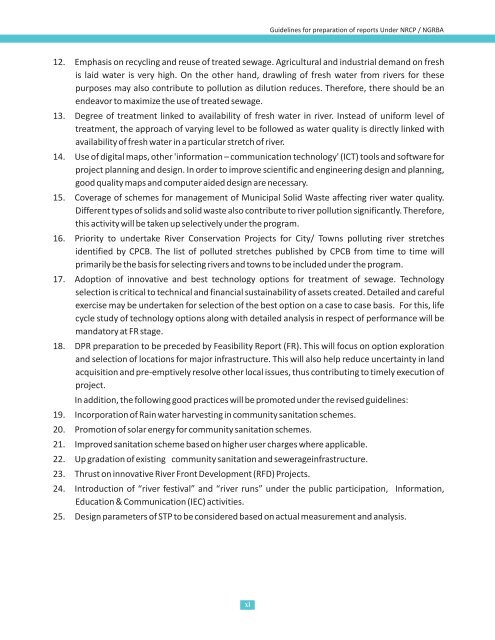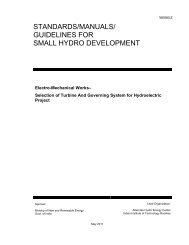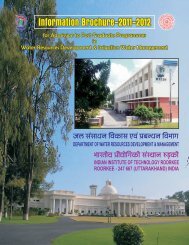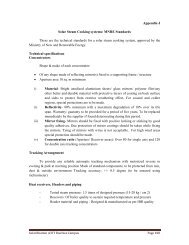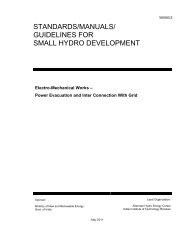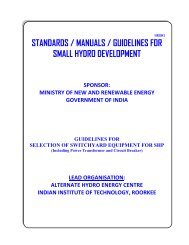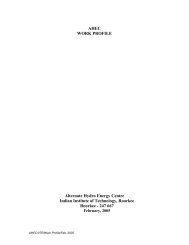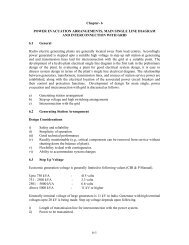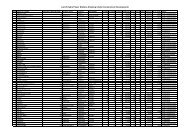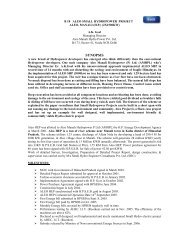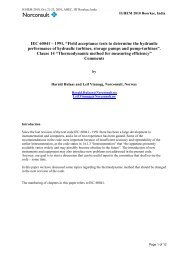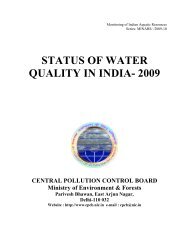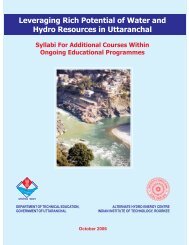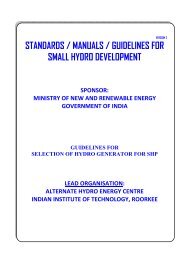annexures - Indian Institute of Technology Roorkee
annexures - Indian Institute of Technology Roorkee
annexures - Indian Institute of Technology Roorkee
You also want an ePaper? Increase the reach of your titles
YUMPU automatically turns print PDFs into web optimized ePapers that Google loves.
Guidelines for preparation <strong>of</strong> reports Under NRCP / NGRBA12. Emphasis on recycling and reuse <strong>of</strong> treated sewage. Agricultural and industrial demand on freshis laid water is very high. On the other hand, drawling <strong>of</strong> fresh water from rivers for thesepurposes may also contribute to pollution as dilution reduces. Therefore, there should be anendeavor to maximize the use <strong>of</strong> treated sewage.13. Degree <strong>of</strong> treatment linked to availability <strong>of</strong> fresh water in river. Instead <strong>of</strong> uniform level <strong>of</strong>treatment, the approach <strong>of</strong> varying level to be followed as water quality is directly linked withavailability <strong>of</strong> fresh water in a particular stretch <strong>of</strong> river.14. Use <strong>of</strong> digital maps, other 'information – communication technology' (ICT) tools and s<strong>of</strong>tware forproject planning and design. In order to improve scientific and engineering design and planning,good quality maps and computer aided design are necessary.15. Coverage <strong>of</strong> schemes for management <strong>of</strong> Municipal Solid Waste affecting river water quality.Different types <strong>of</strong> solids and solid waste also contribute to river pollution significantly. Therefore,this activity will be taken up selectively under the program.16. Priority to undertake River Conservation Projects for City/ Towns polluting river stretchesidentified by CPCB. The list <strong>of</strong> polluted stretches published by CPCB from time to time willprimarily be the basis for selecting rivers and towns to be included under the program.17. Adoption <strong>of</strong> innovative and best technology options for treatment <strong>of</strong> sewage. <strong>Technology</strong>selection is critical to technical and financial sustainability <strong>of</strong> assets created. Detailed and carefulexercise may be undertaken for selection <strong>of</strong> the best option on a case to case basis. For this, lifecycle study <strong>of</strong> technology options along with detailed analysis in respect <strong>of</strong> performance will bemandatory at FR stage.18. DPR preparation to be preceded by Feasibility Report (FR). This will focus on option explorationand selection <strong>of</strong> locations for major infrastructure. This will also help reduce uncertainty in landacquisition and pre-emptively resolve other local issues, thus contributing to timely execution <strong>of</strong>project.In addition, the following good practices will be promoted under the revised guidelines:19. Incorporation <strong>of</strong> Rain water harvesting in community sanitation schemes.20. Promotion <strong>of</strong> solar energy for community sanitation schemes.21. Improved sanitation scheme based on higher user charges where applicable.22. Up gradation <strong>of</strong> existing community sanitation and sewerageinfrastructure.23. Thrust on innovative River Front Development (RFD) Projects.24. Introduction <strong>of</strong> “river festival” and “river runs” under the public participation, Information,Education & Communication (IEC) activities.25. Design parameters <strong>of</strong> STP to be considered based on actual measurement and analysis.xi


